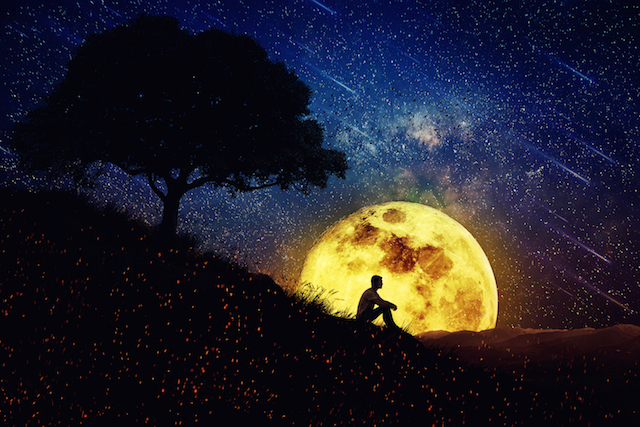Source http://www.bornfitness.com/abs-workout/
You’ve heard the desperate tactics in those late night infomercials. The crazed fitness models who tell you to do endless crunches on useless gizmos to get the abs of your dreams.
You’ve gone to the gym and heard “hardcore” lifters insist that you don’t need an “abs workout” at all, and that a steady diet of compound exercises like squats and deadlifts will do the trick. Still, others say you can simply plank your way to abdominal greatness.
With all of the conflicting theories out there, it’s no wonder you are still searching for a clear answer on how to design an abs workout that will actually work for you.
What you want seems simple: a sturdy core that allows you to live the life you want…and it doesn’t hurt if you also look good shirtless on the beach. But it’s hard to know what to do when you spend so much time filtering through misinformation, outdated methods, and marketing hype from a fitness industry that knows everybody loves a six-pack. No one could blame you for feeling overwhelmed, hopping from program to program, or even giving up entirely.

</d…
Source http://www.bornfitness.com/abs-workout/
You’ve heard the desperate tactics in those late night infomercials. The crazed fitness models who tell you to do endless crunches on useless gizmos to get the abs of your dreams.
You’ve gone to the gym and heard “hardcore” lifters insist that you don’t need an “abs workout” at all, and that a steady diet of compound exercises like squats and deadlifts will do the trick. Still, others say you can simply plank your way to abdominal greatness.
With all of the conflicting theories out there, it’s no wonder you are still searching for a clear answer on how to design an abs workout that will actually work for you.
What you want seems simple: a sturdy core that allows you to live the life you want…and it doesn’t hurt if you also look good shirtless on the beach. But it’s hard to know what to do when you spend so much time filtering through misinformation, outdated methods, and marketing hype from a fitness industry that knows everybody loves a six-pack. No one could blame you for feeling overwhelmed, hopping from program to program, or even giving up entirely.

</d…
Source http://feedproxy.google.com/~r/tinybuddha/~3/AOvKVT2mrCM/

“The primary cause of unhappiness is never the situation but your thoughts about it. Be aware of the thoughts you are thinking.” ~Eckhart Tolle
One of the first ideas I learned in law school was “the reasonable third person,” a legal fiction created to help figure out if someone has acted unreasonably. There’s no clear-cut definition, so I spent a lot of energy arguing what a reasonable person would do. This hypothetical person haunted my law school exams, and later, my career.
But I realized the reasonable third person could teach me something beyond the courtroom. I could apply that perspective to ease anxiety in my own life.
At my law firm, I was so busy that I could barely make meetings in time. It would always be a mad scramble to get everything ready. The senior lawyer would always be annoyed and stressed, and the partner would barely acknowledge my presence.
I’d have too much coffee and be nervous. I’d try to be casual, but I’d either fidget too much or sit too still, trying not to attract attention. I was always so nervous I’d get asked a question and not know what to say.
Mostly, I just sat silently in meetings. Occasionally I’d make a comm…
Source http://feedproxy.google.com/~r/tinybuddha/~3/AOvKVT2mrCM/

“The primary cause of unhappiness is never the situation but your thoughts about it. Be aware of the thoughts you are thinking.” ~Eckhart Tolle
One of the first ideas I learned in law school was “the reasonable third person,” a legal fiction created to help figure out if someone has acted unreasonably. There’s no clear-cut definition, so I spent a lot of energy arguing what a reasonable person would do. This hypothetical person haunted my law school exams, and later, my career.
But I realized the reasonable third person could teach me something beyond the courtroom. I could apply that perspective to ease anxiety in my own life.
At my law firm, I was so busy that I could barely make meetings in time. It would always be a mad scramble to get everything ready. The senior lawyer would always be annoyed and stressed, and the partner would barely acknowledge my presence.
I’d have too much coffee and be nervous. I’d try to be casual, but I’d either fidget too much or sit too still, trying not to attract attention. I was always so nervous I’d get asked a question and not know what to say.
Mostly, I just sat silently in meetings. Occasionally I’d make a comm…
Source http://feedproxy.google.com/~r/tinybuddha/~3/gLnCHnXGmB8/

“Life is short. Focus on what matters and let go of what doesn’t.” ~Unknown
Our most precious commodities are not our smartphones, 3D TVs, brand new cars, or even our big and impressive houses.
Our most precious commodities can’t be found at the bank. They can’t be ordered online. The truth is, they are on a very short list.
Amongst our most precious commodities are our purpose, time, health, and our relationships.
How I Came to This Conclusion
Several years ago I realized I was accumulating more in my life. More things that didn’t really matter to me or speak to me on a spiritual level. More commitments I wasn’t really passionate about keeping. This was all leaving me feeling a little flat and unfulfilled. It felt like something was missing, but I wasn’t sure what that something was.
A period of fairly deep reflection followed. I then started to take some action based on this reflection. Amongst other things, that action has meant:
- I have made good on long-term dreams to write creatively
- I have realized I value freedom and flexibility over the ability to just earn more, and I now seek out ways of living accordingly.
- I have accumulated fewer material possessions but enjoyed more (travel and holidays, events,…
Source http://feedproxy.google.com/~r/tinybuddha/~3/gLnCHnXGmB8/

“Life is short. Focus on what matters and let go of what doesn’t.” ~Unknown
Our most precious commodities are not our smartphones, 3D TVs, brand new cars, or even our big and impressive houses.
Our most precious commodities can’t be found at the bank. They can’t be ordered online. The truth is, they are on a very short list.
Amongst our most precious commodities are our purpose, time, health, and our relationships.
How I Came to This Conclusion
Several years ago I realized I was accumulating more in my life. More things that didn’t really matter to me or speak to me on a spiritual level. More commitments I wasn’t really passionate about keeping. This was all leaving me feeling a little flat and unfulfilled. It felt like something was missing, but I wasn’t sure what that something was.
A period of fairly deep reflection followed. I then started to take some action based on this reflection. Amongst other things, that action has meant:
- I have made good on long-term dreams to write creatively
- I have realized I value freedom and flexibility over the ability to just earn more, and I now seek out ways of living accordingly.
- I have accumulated fewer material possessions but enjoyed more (travel and holidays, events,…






